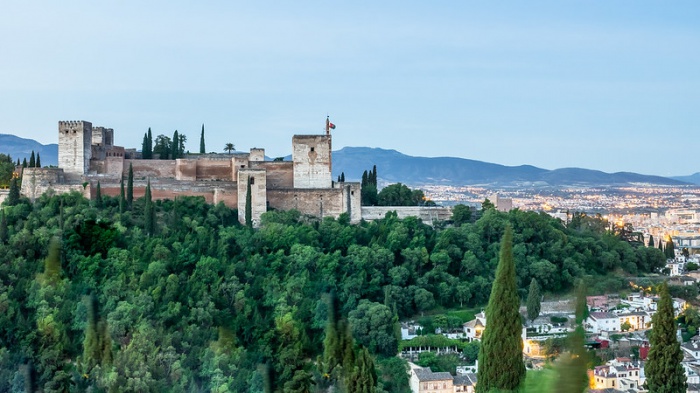
At the foot of the Sierra Nevada Mountains in the Spanish province of Andalusia, there is the historic city of Granada. During almost 250 years, between 1238 and 1492, the city, which was a part of the Nasrid Kingdom at that time, remained the last mainstay of the Muslim culture on the peninsula. At the time of the Nasrids it became the center of economic prosperity, cultural influence and intellectual development.
History overview
The first mention of Muslims in Granada dates back to 711 A.D. that means several centuries before the “Golden Age”, initiated by Muhammad ibn Yusuf ibn Nasr, who founded the emirate in 1230. The Muslim identity of Granada was finally formed after the collapse of Cordoba and Seville, which could not resist the onslaught of Catholic armies in the north. Subsequently, Granada became one of the richest European cities, abounding in intellectuals, artisans and traders.
Like in many other empires throughout their history, internecine strife led to the collapse of the Nasrid dynasty. And the catholic monarchs of the North, who managed to take full advantage of the weakened state, eventually ended the last remaining Muslim emirate. Granada capitulated in 1492.
***
It is only worth visiting Granada once, so that it can win your hearts forever. Similar to the Old Kingdom of Nasrid, the city is filled with richly decorated shops with beckoning atmosphere until late at night. The heritage of the Nasrids can be seen (and even heard) all over the city: in architectural details and historical sites, in national cuisine and even in the language that contains numerous borrowings from the Arabic language.
Recently, one can observe gradual revival of the Islamic heritage of Granada – the heritage, which Queen Isabella and her successors tried to bury and destroy during their reign. Along with the growth of tourism to such popular places as the Alhambra, older and less known ones are also being restored. For instance, in the last 15 years, even two new mosques have been built (for the first time in 500 years).
Albaicin
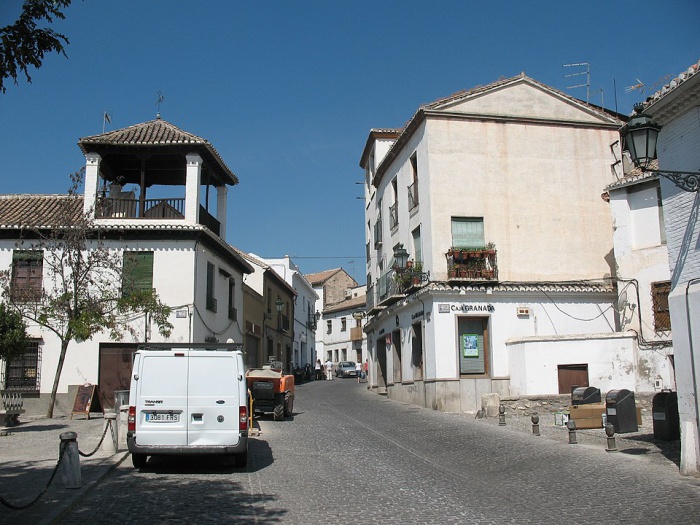
The district of Albaicin is the oldest Arab quarter of the city. Nowadays it is home to a significant Muslim population, predominantly of the Moroccan origin (hence a great number of Moroccan restaurants). Retaining a historic labyrinth of narrow streets from the Nasrid era, this lively district is replete with wonderful restaurants and shops, where one can taste authentic Moroccan tea. Interestingly, as a UNESCO World Heritage Site, Spanish and Islamic architecture is considered to be one of the best preserved in southern Spain.
Everyone who has visited Moroccan tea little houses at least once, paid attention to the unusually complex geometric patterns, which are typical for Spain. Besides, windows and doors of such houses are open until late at night.
Grand Mosque of Granada
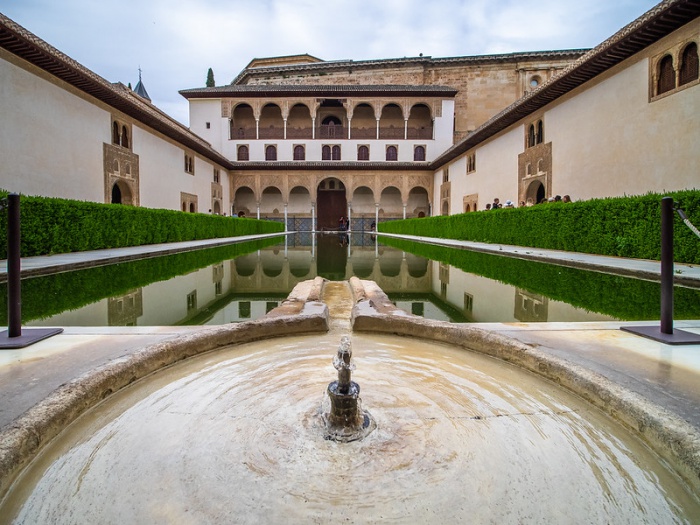
This mosque was opened in 2003 but despite its small age, architectural peculiarities of the building deceive the visitor, who mistakes it for the mosque of the Andalusian period.
A little piece of advice for those who want to see this mosque: the best way to get to it from Gran Via de Colón, the main and the busiest street of Granada, is to take one of numerous red minibuses.
Barely having crossed the threshold, the visitor can see a beautiful marble garden with the fountain in the centre, as well as splendid view of the Alhambra. The interior of the building is a mosaic of influences from all over the Muslim world. For instance, mihrab is an exact copy of what is located in the Grand Mosque of Cordoba. And marble tiles look the same as those in the mosque of Al-Aqsa in Palestine. Windows resemble the Sultanahmet Mosque in Istanbul. The most interesting thing is that the fountain in the courtyard was drafted by a master from Fez, who relied on a thousand-year-old Andalusian design in his work.
Another advice: many guides, tourists and online-recommendations advise to go to the Monastery of San-Nicolas in order to enjoy sunsets and views of the Alhambra. As it turned out, the mosque is located near the monastery. In addition to it, there are less people here and the view of the Alhambra is also beautiful. But be sure to check the opening hours of the mosque because it is not always open and the gates to the inner courtyard can be locked.
There is, at least, one more active mosque in Granada – the Sheikh bin Zayed bin Sultan Al Nahyan Mosque. It is located in a side street in the Albaicin district.
Madrasah
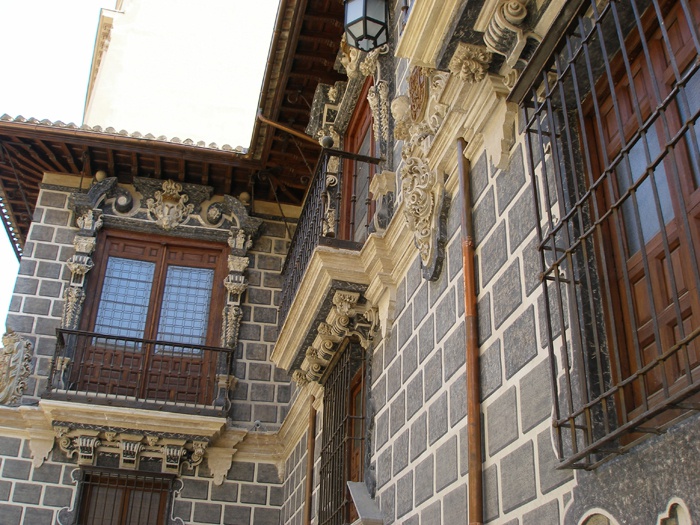
In the very heart of Granada, next to the Royal Chapel of Granada (Isabella and Ferdinand Mausoleum) and the Granada Cathedral (on the site of the mosque from the Nasrida era), there is a madrasah – a vivid testimony to the cultural fusion of the region. The building features Andalusian, Mudejar and modern architectural styles that have blended together. Built as a school and university in 1349 by Sultan Yusuf I, the madrasah still belongs to the University of Granada.
On the ground floor there is a classical Andalusian prayer hall with intricately decorated mihrab. Here the ayahs from the Noble Quran and praise of God are intertwined with colorful mosaics. The ceiling is decorated in accordance with classical Mudejar style (this is a post-Islamic Iberian style that had a strong influence on the Muslim period). At the time of Sultan Yusuf I there was a library, bedrooms and classrooms in the university. The prayer hall is, unfortunately, the only room remained from the original building. Under Christian rule, the building was hidden from view until the restoration work that began in the XIX century.
When you go upstairs, you will find a modern lecture hall called “the Knights Hall”, which originally was used as the hall for the meetings of the City Council. Perhaps, it is the brightest testimony to the steadfastness of Andalusian tradition, art and culture right in the heart of Granada, next to the mausoleum of Spanish conquerors who unsuccessfully tried to erase this heritage from the face of the earth.
Santo Domingo Royal Quarter
Santo Domingo Royal Quarter, by its very existence, is an architectural precedent for a fortress complex. The palace of the Nasrid period was built by Muhammad II in 1273-1302. Hidden in the quiet district of Realejo-San-Matias, today only a fragment of the original palace has survived. After the collapse of the Nasrid Kingdom, the palace belonged to catholic monarchs who handed it over to the Dominican Order, a Catholic religious order founded by the Spanish priest Dominic de Guzmán. Eventually, it became the private property, after which the main part of the building was demolished.
In the past few decades, Spanish archaeologists have begun restoration work in order to restore that little what has been preserved from the once majestic palace.
Perhaps, these ruins are the most beautiful and peaceful place where one can spend time, reflecting on the rich history that has passed through this quaint part of the city.
Alhambra

No trip to Granada is without visiting its main attraction. Although the city has much to offer even the most spoilt tourist, the Alhambra is undoubtedly its gem. It is the most visited monument in the whole country. Built in the VIII century, it was the last remaining royal building of the Islamic civilization in Western Europe, the last residents of which were the Nasrids. It got its name from the red walls, on which along the entrance in Arabic is written "الحمراء" - "red". Along with the Albaicin district, it was inscribed on the UNESCO World Heritage List in 1984.
The complex is huge and one can easily get lost in it. The palace itself was a separate city, which was later significantly expanded and each ruler left their indelible mark. For instance, Charles V even built his own palace within the complex in the post Nasrid era.
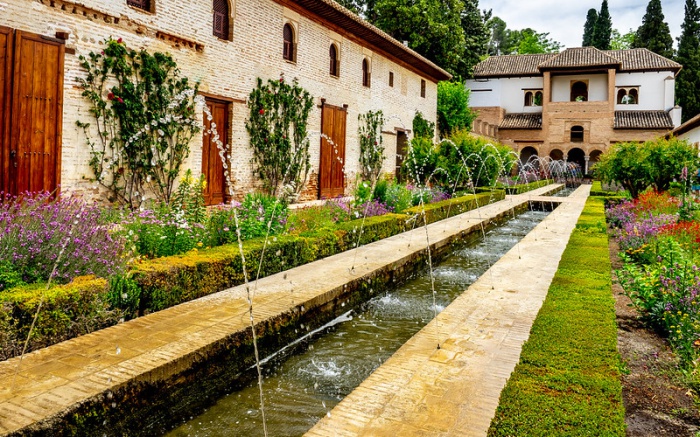
The Generalife, a famous garden consisting of flowers, a wonderful labyrinth of carved shrubs and fountains, attracts special attention of tourists. It takes your breath away because of extreme attention to detail, symmetry, beautiful Koranic verses and perfect alternation of open courtyards and interior spaces. For many centuries, palaces of the Nasrids had been maintaining their special Islamic identity. Despite the destruction of many parts of the Alhambra by Catholics, French bombardment in the 1800s and total oblivion in the XVIII and XIX centuries, the Nasrid palaces remain mainly intact. They consist of three separate buildings called Mehvar, the palaces of Comares and the Court of the Lions.
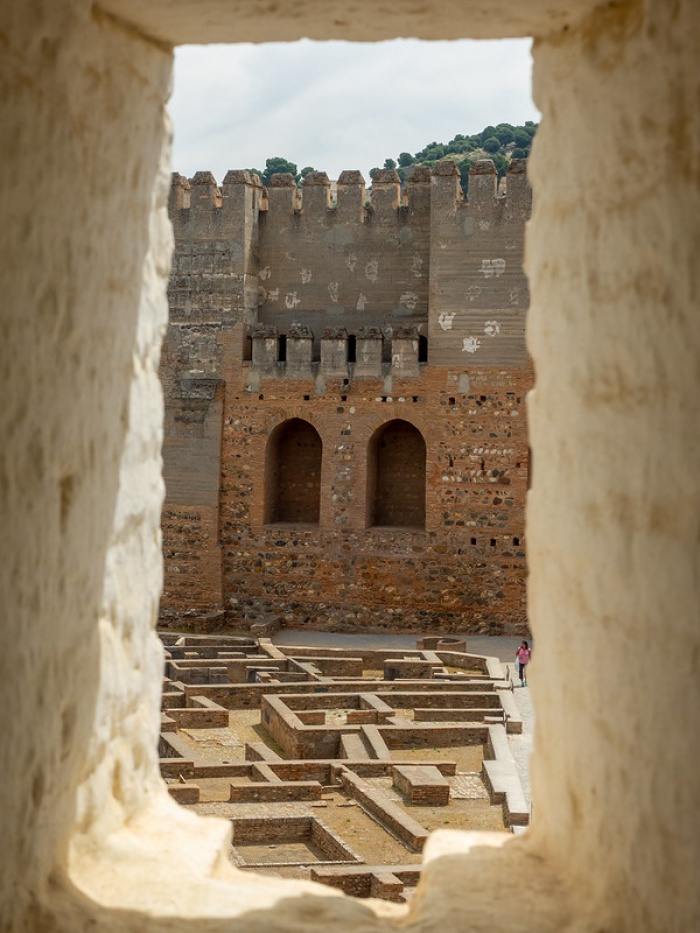
The most ancient part of the Alhambra is the Alcazaba, which is an original fortress. It had been built before palaces and fountains appeared. The Nasrids used the fortress as a military base of the Royal Guard. Climbing the towers, each higher than the previous one, you can see what the Sultans themselves once saw – Granada in all its inexpressible beauty, surrounded by magnificent snow caps of the Sierra Nevada.
Perhaps, the special distinguishing feature of Granada which is imbued with every mosque, souvenir or historical place, is the phrase in Arabic “There is no winner but God”. This phrase inscribed on the sacred walls of the Alhambra and other palaces and mosques in Seville and Cordoba. The fact that these constructions have been still standing, centuries after the expulsion of the Muslims from Iberia, is indisputable proof of the truth of this phrase...
Ilmira Gafiyatullina
Photo: Creative Commons
